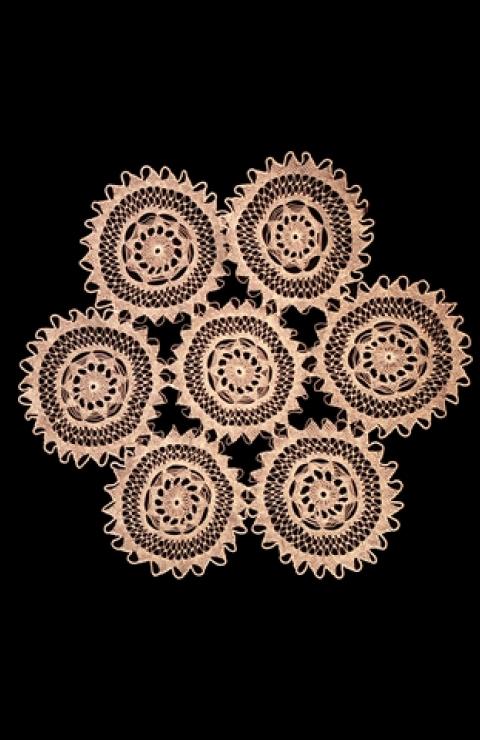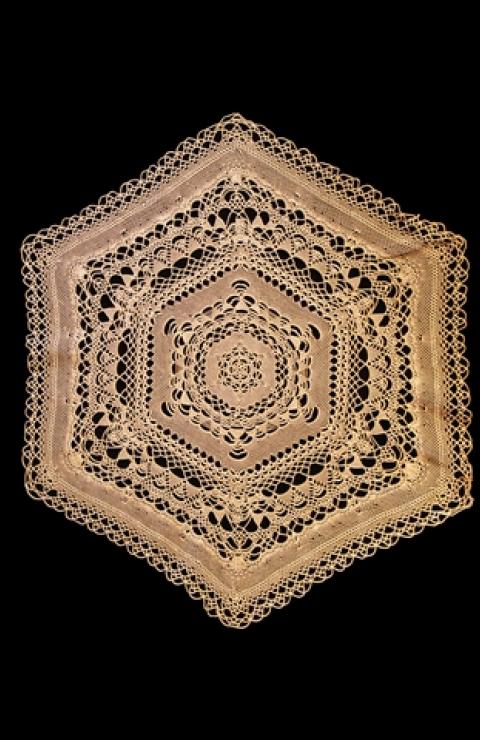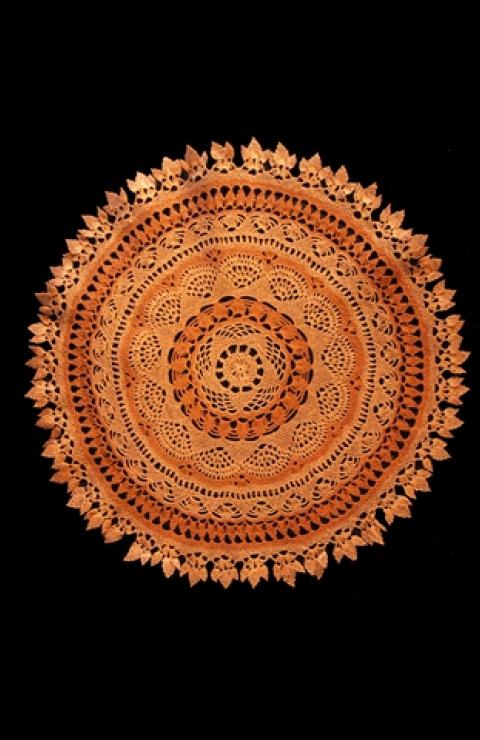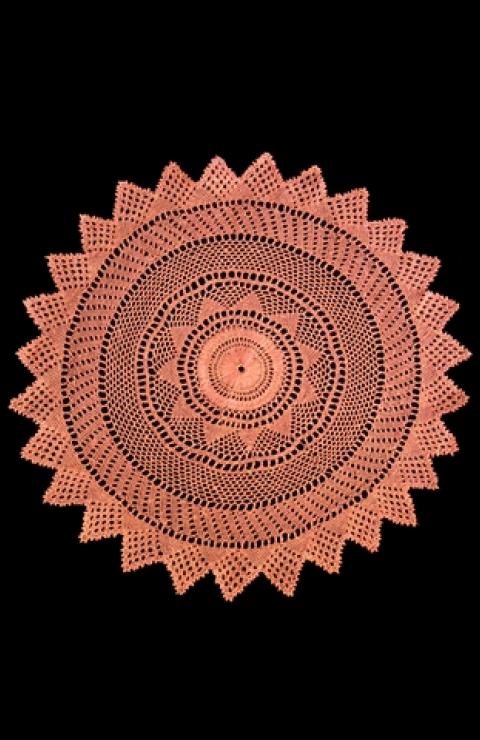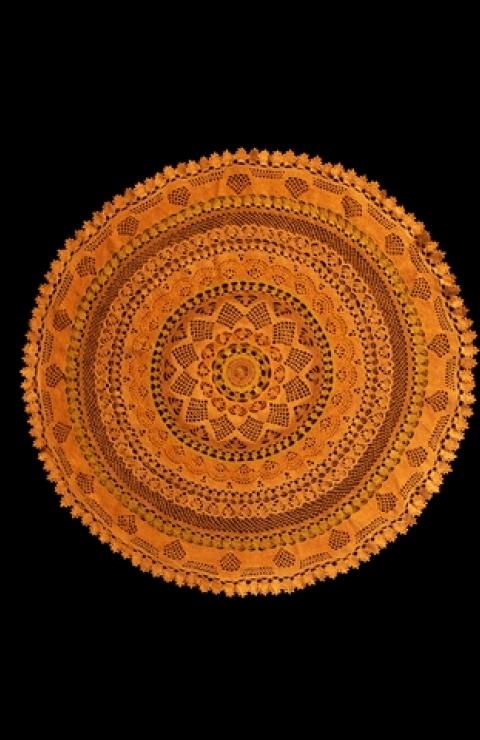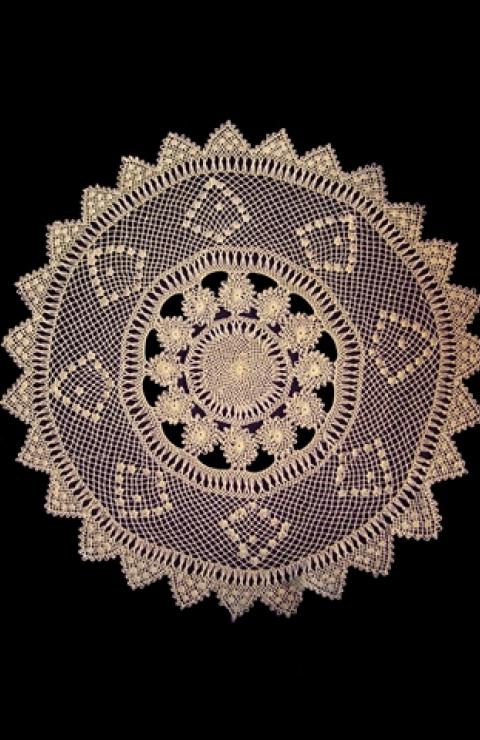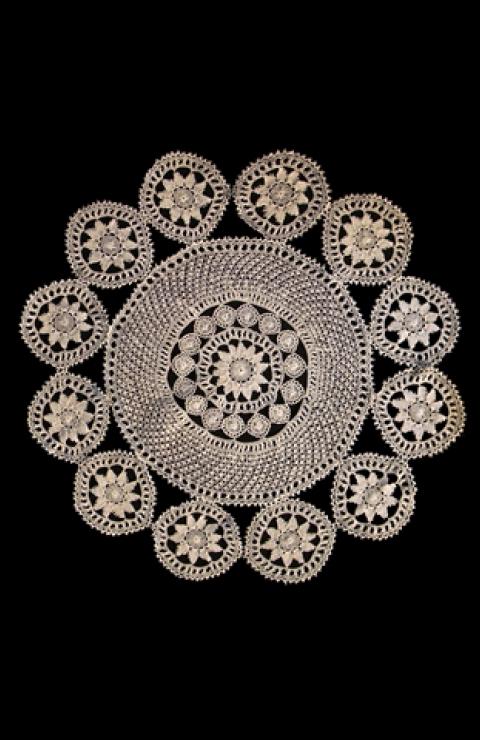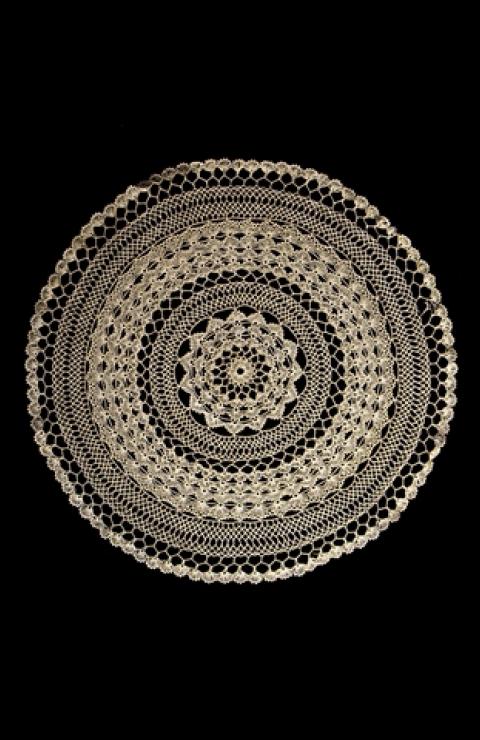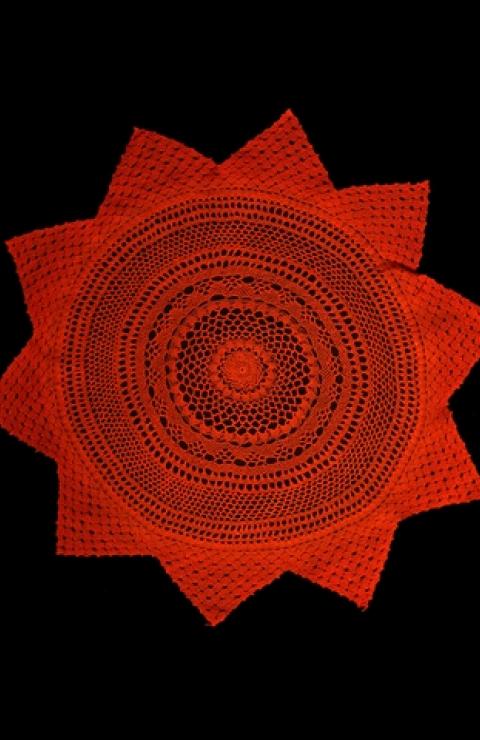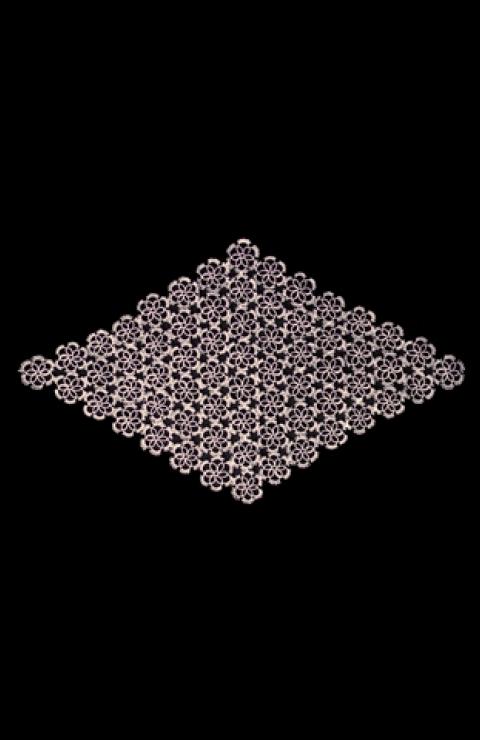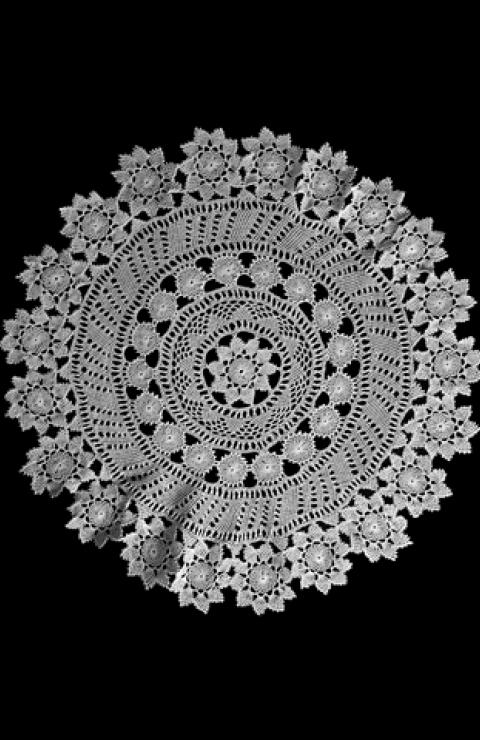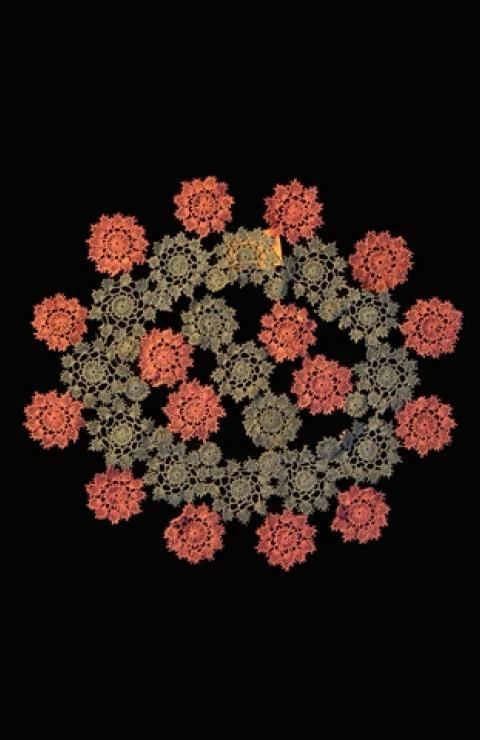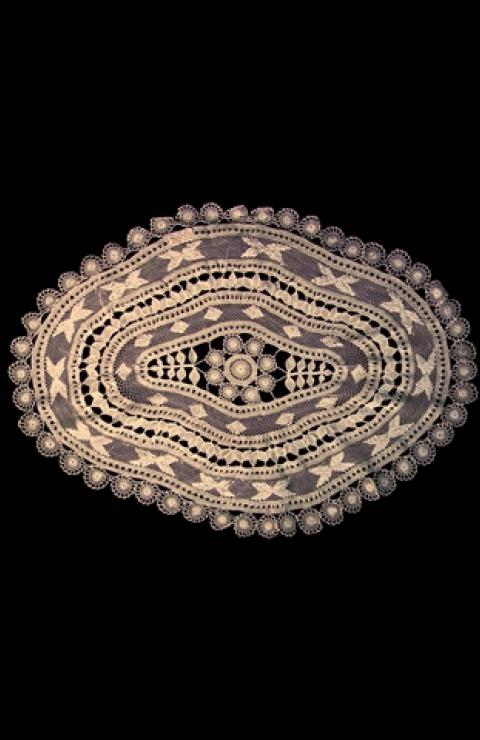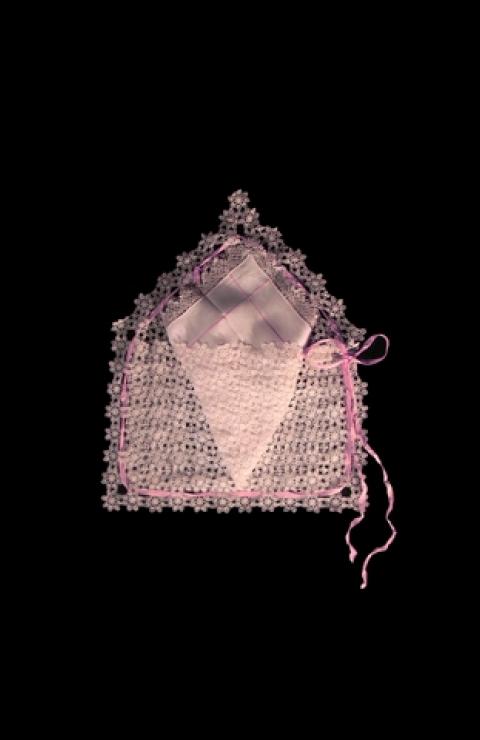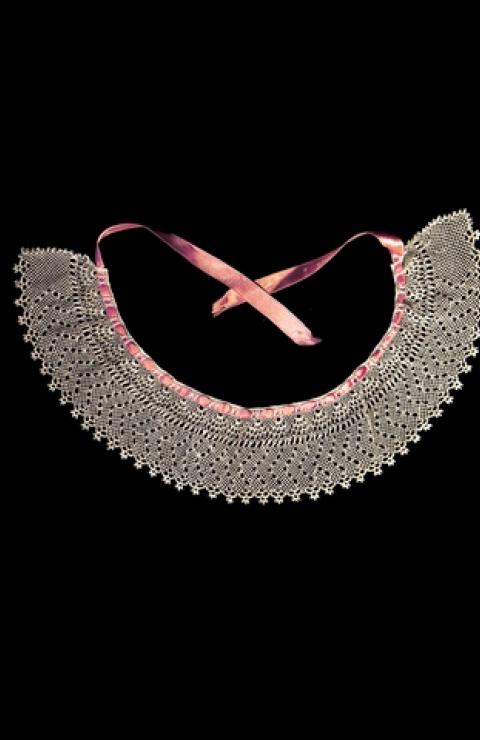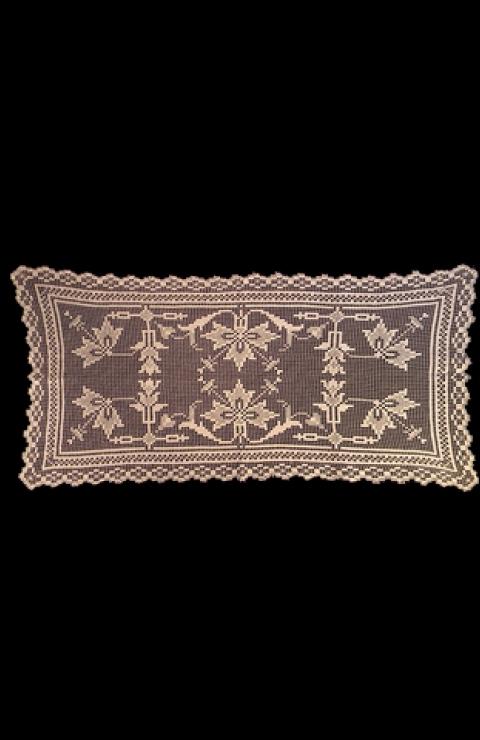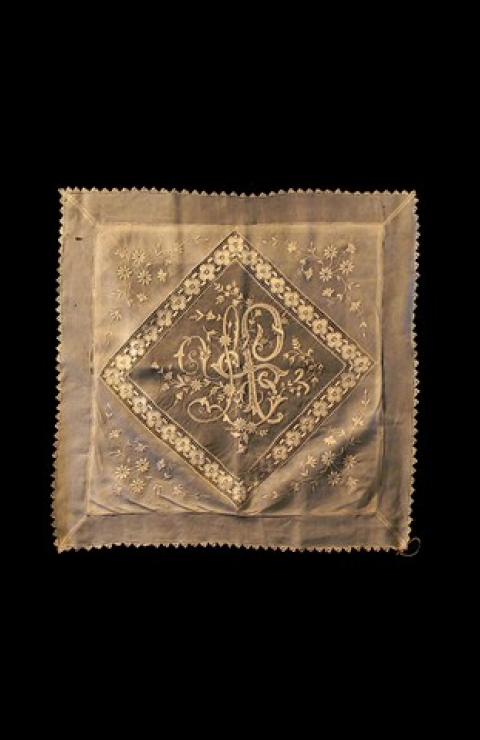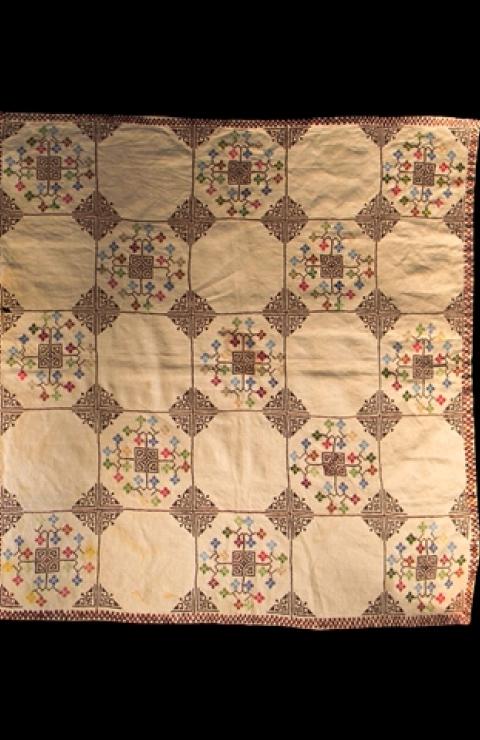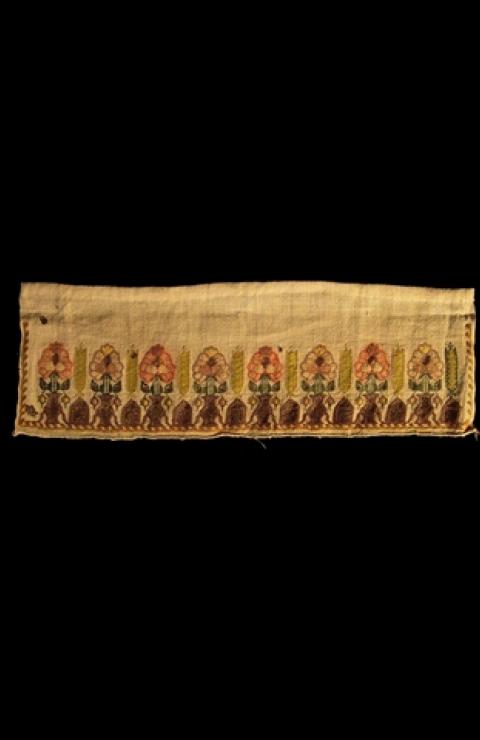Lace making is one of the oldest and the most widespread branches of Armenian decorative-applied art. It is an animation exclusively for the women. Different tools are used to make lace-knitting needles, hook, bobbins, fillet hook, shuttle, simple needle. The preference is given to this type.
Different threads of different color and thickness (cotton, silk, gold) were used for this purpose. The shape is also different-round, ribbon like, the endings for handkerchiefs, women’s underwear.
Many old designs are still preserved-sign of eternity (solar), flower petals, rosettes, triangles, bridges, columns, berries.
The central sign is solar, other designs follow each other. As to the form–they are round, square, of elliptical shape.
This type of lace making was used to make table and bed covers, curtains, shawls, collars, veils, head decoration-rose (over which the veil was spread), pockets for buttons, combs, handkerchiefs.
Lace making was spread in all the regions of Armenia, but in the XIX century the famous centers were Vaspourakan, Bardzr Hayk (Karin, Kars, Alexandrapol, Akhaltskha, Akhalkalak), Cilicia (Ajntap, Marash, Urfa), Pokr Hayk (Sebastia, Kesaria, Arabkir), Polis, Tiflis.
There is a likeness between stone and wood carving, jewelry, and it is especially obvious between lace and cross-stone.
Embroidery takes a special place in Armenian ethnic culture. It was a beloved activity in all cities and villages, where it was one of the everyday kind of work for the women. In cities it reached the level of craft, that was a kind of work for the men as well.
Church embroidery expresses the specific features of different historical-ethnographic regions.
In the XIX century the schools of Armenian embroidery were formed: Van-Vaspourakan, Bardzr Hayk, Poqr Hayk, Cilicia, Ayrarat, Syunik-Artsakh.
Each of these schools had its specific features expressed in the used threads and ways of techniques.
The variety of traditional embroidery very often carries the names of the cities-Van, Marash, Ayntap.
Many of these techniques are spread in other regions and diaspora.
The materials used for embroidery are silk, linen, leather, brocade and others.
The geometric patterns, plant motifs in Armenian embroidery are represented in stylized and realistic shapes. The plant and animal motifs as a rule express the local flora and fauna as well as people’s occupations. The geometric motifs repeat the patterns met in rugs, carpets, ceramics.
The embroidered parts of the costumes of Vaspourakan and Moush, Shatakh, Timar, Vayots Dzor regions are peculiar.
The Armenian embroidery has similarity with miniature painting, fresco, wood, and stone carving, jewelry, gold-smithing.

